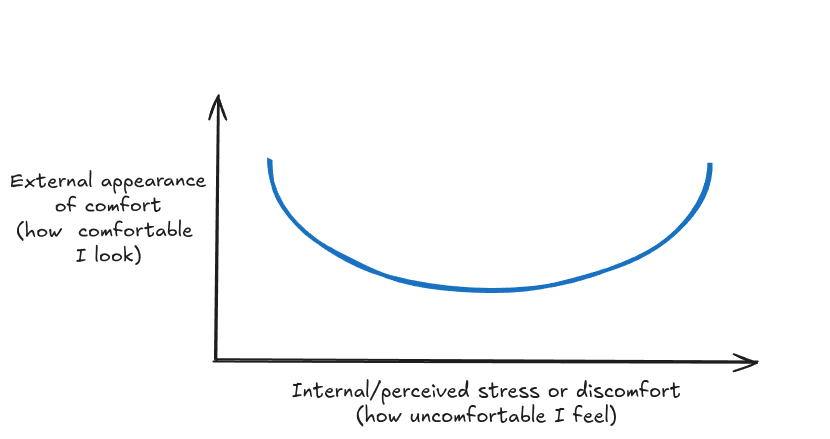The relationship between internal comfort levels and external signs of stress (or, masking to survive)
I’ve noticed this interesting phenomenon in myself. My external appearance of comfort (how comfortable and happy I appear to others in a situation) does not show a linear relationship with my actual stress levels.
- In a low-stress situation, such as sitting at my desk and writing a blog article, I appear externally very comfortable and happy. An external observer would see a comfortable body posture, somebody reflecting deeply and thoughtfully, perhaps a head bopping along to music, and so on - all the signs of chilling out.
- In a moderate-stress situation, such as an unfamiliar social situation or a doctor’s appointment, I appear the most stress. I am likely to exhibit fast, shallow breathing, sweating, hunched shoulders, perhaps scanning the physical environment for threats, and so on.
- In a very high-stress situation, such as an active medical emergency or an extremely loud concert, I am likely to appear very comfortable. I am likely to have a comfortable body posture, to be speaking and making decisions assertively, to be smiling, and so on.
The difference between the low-stress situation and the very high-stress situation is that in the high-stress situation, I can mask my feelings effectively. That is, due to the stakes of the situation (medical emergency = somebody else’s life is in danger; very loud noises = my life is in danger), I can temporarily suspend the processing of my emotions for the purposes of survival. This means that, to an outside observer, I probably look quite comfortable. This phenomenon is described in the literature on how autistic people process emotions, such as the book Self-Care for Autistic People by Megan Anna Neff.
But the inner experience of a low-stress situation and a very high-stress situation is very different! A very high-stress situation would require me to rest for hours, days, or sometimes weeks to recover.
